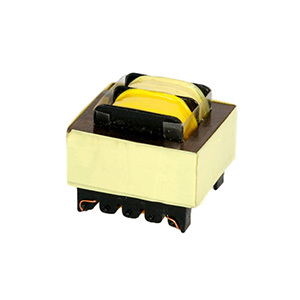NEWS
Understanding Autotransformers: A Comprehensive Guide for Electrical Professionals
Release time:
Oct 10,2024
Autotransformers are a specialized type of transformer that differ significantly from traditional isolated transformers. They are designed with a single winding that serves as both the primary and secondary winding, which results in a more compact and cost-effective solution for voltage conversion. This unique design enables autotransformers to step up or step down voltage levels while maintaining a relatively high degree of efficiency.
One of the primary advantages of autotransformers is their ability to efficiently handle large currents while reducing the overall size and weight compared to traditional transformers. This is largely due to the fact that they utilize a common winding for both input and output, allowing for a more direct transfer of energy. Consequently, autotransformers are often found in applications where space and weight are critical factors, such as in industrial machines, power distribution systems, and electric vehicles.
In addition to their compact design, autotransformers are highly efficient, typically achieving efficiency ratings over 95%. This efficiency is particularly beneficial in applications where energy conservation is paramount. Moreover, because they have fewer turns in the winding than conventional transformers, autotransformers can reduce copper losses, which further enhances their operational efficiency.
Another key feature of autotransformers is their ability to provide voltage adjustment with minimal losses. They can easily adjust voltage levels to match the requirements of specific equipment or processes, making them an ideal choice for applications such as motor starting, voltage regulation, and power supply for sensitive electronic devices. Their ability to adjust voltage levels dynamically allows for improved performance and longevity of connected equipment.
However, it is important to note that autotransformers do not provide electrical isolation between the input and output circuits. This characteristic can pose certain risks, particularly in scenarios where safety is a concern. Therefore, it is crucial for electrical professionals to evaluate the specific requirements of their applications carefully and consider whether the lack of isolation may affect the safety or performance of the overall system.
In summary, autotransformers are an innovative solution for voltage conversion in various electrical applications. Their compact size, high efficiency, and ability to adjust voltage levels make them a popular choice among electrical engineers and professionals. However, it is essential to weigh the benefits against the potential safety implications when considering their use in specific applications. Understanding the characteristics and applications of autotransformers can lead to more informed decisions and improved outcomes in electrical engineering projects.
One of the primary advantages of autotransformers is their ability to efficiently handle large currents while reducing the overall size and weight compared to traditional transformers. This is largely due to the fact that they utilize a common winding for both input and output, allowing for a more direct transfer of energy. Consequently, autotransformers are often found in applications where space and weight are critical factors, such as in industrial machines, power distribution systems, and electric vehicles.
In addition to their compact design, autotransformers are highly efficient, typically achieving efficiency ratings over 95%. This efficiency is particularly beneficial in applications where energy conservation is paramount. Moreover, because they have fewer turns in the winding than conventional transformers, autotransformers can reduce copper losses, which further enhances their operational efficiency.
Another key feature of autotransformers is their ability to provide voltage adjustment with minimal losses. They can easily adjust voltage levels to match the requirements of specific equipment or processes, making them an ideal choice for applications such as motor starting, voltage regulation, and power supply for sensitive electronic devices. Their ability to adjust voltage levels dynamically allows for improved performance and longevity of connected equipment.
However, it is important to note that autotransformers do not provide electrical isolation between the input and output circuits. This characteristic can pose certain risks, particularly in scenarios where safety is a concern. Therefore, it is crucial for electrical professionals to evaluate the specific requirements of their applications carefully and consider whether the lack of isolation may affect the safety or performance of the overall system.
In summary, autotransformers are an innovative solution for voltage conversion in various electrical applications. Their compact size, high efficiency, and ability to adjust voltage levels make them a popular choice among electrical engineers and professionals. However, it is essential to weigh the benefits against the potential safety implications when considering their use in specific applications. Understanding the characteristics and applications of autotransformers can lead to more informed decisions and improved outcomes in electrical engineering projects.


















